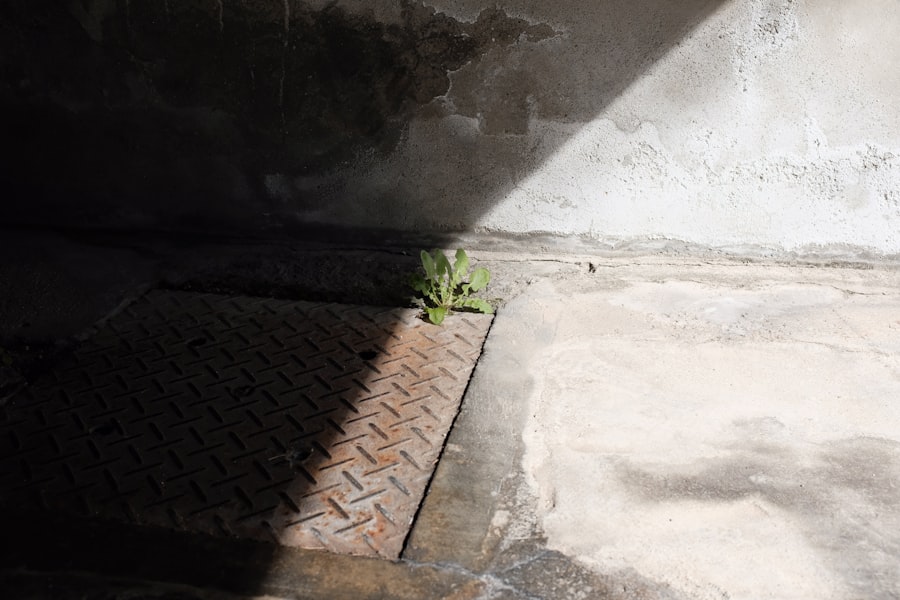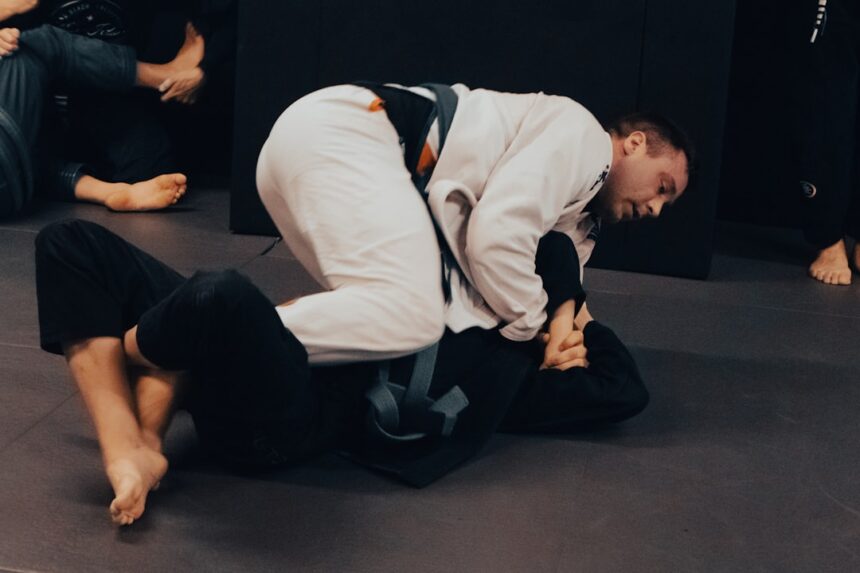Depersonalization and derealization are complex psychological phenomena that can leave you feeling detached from yourself or your surroundings. When you experience depersonalization, it may feel as though you are observing your life from a distance, as if you are an outsider looking in. You might notice a sense of unreality about your thoughts, feelings, or even your body.
On the other hand, derealization can create a sense of disconnection from the world around you, making it seem dreamlike or distorted. These experiences can be unsettling and may lead to anxiety or confusion, as you grapple with the feeling that something is fundamentally wrong. Understanding these experiences is crucial for managing them effectively.
They often arise in response to stress, trauma, or overwhelming emotions, serving as a coping mechanism for your mind. While they can be distressing, recognizing that they are not uncommon can provide some comfort. Many people experience these sensations at some point in their lives, particularly during periods of high stress or emotional turmoil.
By acknowledging what depersonalization and derealization are, you can begin to explore strategies to ground yourself and regain a sense of connection to both yourself and the world around you.
Key Takeaways
- Depersonalization/Derealization is a mental health condition characterized by feeling disconnected from oneself or the world around them.
- Grounding techniques are important for managing depersonalization/derealization and can help bring individuals back to the present moment.
- Deep breathing exercises can help regulate the nervous system and reduce symptoms of depersonalization/derealization.
- Mindfulness and meditation practices can help individuals become more aware of their thoughts and feelings, reducing the impact of depersonalization/derealization.
- Engaging the five senses through activities like aromatherapy, listening to music, or enjoying a favorite food can help individuals feel more grounded and present.
The Importance of Grounding Techniques
Grounding techniques are essential tools for managing feelings of depersonalization and derealization. They serve as a bridge back to reality, helping you reconnect with your body and environment when you feel disconnected. These techniques can be particularly beneficial during moments of heightened anxiety or stress, providing immediate relief and a sense of stability.
By incorporating grounding practices into your daily routine, you can cultivate a greater sense of control over your experiences and emotions. Moreover, grounding techniques can enhance your overall well-being by promoting mindfulness and self-awareness. When you engage in these practices, you learn to focus on the present moment rather than getting lost in overwhelming thoughts or feelings.
This shift in focus can help reduce anxiety and improve your emotional resilience over time. By prioritizing grounding techniques, you empower yourself to navigate the challenges of depersonalization and derealization with greater ease and confidence.
Deep Breathing Exercises

Deep breathing exercises are one of the simplest yet most effective grounding techniques available to you. When you feel detached or anxious, your breath often becomes shallow and rapid, which can exacerbate feelings of panic. By consciously slowing down your breathing, you can activate your body’s relaxation response and create a sense of calm.
Start by finding a comfortable position, either sitting or lying down, and take a moment to close your eyes if it feels right. Inhale deeply through your nose for a count of four, allowing your abdomen to expand fully. Hold that breath for a count of four before exhaling slowly through your mouth for another count of four.
Repeat this cycle several times, focusing solely on the rhythm of your breath. As you practice deep breathing, you may notice that your mind begins to quiet and your body relaxes. This technique not only helps ground you in the present moment but also provides a physical anchor that connects you to your body.
With each breath, visualize tension leaving your body and clarity returning to your mind. Over time, deep breathing can become a powerful tool in your arsenal for managing feelings of depersonalization and derealization, allowing you to regain control when these sensations arise.
Mindfulness and Meditation
| Category | Metrics |
|---|---|
| Usage | Number of people practicing mindfulness and meditation |
| Effectiveness | Reduction in stress levels |
| Health Benefits | Improvement in mental well-being |
| Research | Number of scientific studies on mindfulness and meditation |
Mindfulness and meditation are practices that encourage you to cultivate awareness of the present moment without judgment. Engaging in mindfulness allows you to observe your thoughts and feelings as they arise, creating space between you and the sensations of depersonalization or derealization. By practicing mindfulness regularly, you can develop a greater understanding of your experiences and learn to respond to them with compassion rather than fear.
Meditation can further enhance this process by providing a structured way to focus your mind and cultivate inner peace. You might start with just a few minutes each day, gradually increasing the duration as you become more comfortable with the practice. Find a quiet space where you won’t be disturbed, sit comfortably, and focus on your breath or a specific mantra.
If your mind begins to wander, gently guide it back to your chosen point of focus without self-judgment. Over time, this practice can help you build resilience against feelings of detachment and foster a deeper connection with yourself.
Using the Five Senses
Engaging your five senses is an effective grounding technique that can help anchor you in the present moment when feelings of depersonalization or derealization arise. By focusing on what you can see, hear, touch, taste, and smell, you create a sensory experience that draws your attention away from overwhelming thoughts and back into reality. Start by identifying one thing for each sense: notice the colors and shapes around you (sight), listen for sounds in your environment (hearing), touch an object nearby (touch), savor a piece of food or drink (taste), and take in any scents (smell).
This practice not only helps ground you but also enhances your appreciation for the world around you. By immersing yourself in sensory experiences, you can cultivate mindfulness and foster a deeper connection with both yourself and your environment. Over time, using the five senses can become an invaluable tool for managing feelings of detachment and promoting emotional well-being.
Physical Movement and Exercise

Physical movement is another powerful grounding technique that can help combat feelings of depersonalization and derealization. Engaging in exercise releases endorphins, which can elevate your mood and reduce anxiety levels. Whether it’s going for a brisk walk, practicing yoga, or dancing to your favorite music, moving your body helps reconnect you with the physical sensations that ground you in reality.
As you engage in physical activity, pay attention to how your body feels—notice the rhythm of your heartbeat, the sensation of your muscles working, and the air filling your lungs. Incorporating regular exercise into your routine not only helps alleviate feelings of detachment but also promotes overall mental health. You may find that physical movement serves as an effective outlet for stress and anxiety, allowing you to process emotions more effectively.
By prioritizing movement as part of your grounding strategy, you empower yourself to reclaim agency over your experiences and foster a greater sense of connection with both yourself and the world around you.
Progressive Muscle Relaxation
Progressive muscle relaxation (PMR) is a technique designed to help reduce physical tension and promote relaxation throughout your body. This method involves systematically tensing and then relaxing different muscle groups while focusing on the sensations associated with each state. Begin by finding a comfortable position where you can fully relax without distractions.
Start at your toes—tense the muscles for a few seconds before releasing them completely. Gradually work your way up through each muscle group—feet, legs, abdomen, arms, shoulders, neck, and face—paying attention to how relaxation feels compared to tension. As you practice PMR regularly, you’ll likely notice an increased awareness of physical sensations in your body.
This heightened awareness can serve as an effective grounding tool when feelings of depersonalization or derealization arise. By reconnecting with the physical sensations associated with tension and relaxation, you create a pathway back to reality that helps anchor you in the present moment.
Visualization Techniques
Visualization techniques involve creating mental images that promote relaxation and grounding when you’re feeling detached from reality. This practice allows you to tap into the power of your imagination to create calming scenarios that help soothe anxiety and foster a sense of safety. To begin visualizing effectively, find a quiet space where you can sit comfortably without distractions.
Close your eyes and take several deep breaths to center yourself. Once you’re relaxed, imagine a peaceful scene—perhaps a serene beach with gentle waves lapping at the shore or a tranquil forest filled with sunlight filtering through the trees. Engage all of your senses as you immerse yourself in this visualization: feel the warmth of the sun on your skin, hear the sounds of nature around you, and smell the fresh air.
By creating vivid mental images that evoke positive emotions, visualization techniques can serve as powerful tools for grounding yourself during moments of depersonalization or derealization.
Affirmations and Mantras
Affirmations and mantras are positive statements that can help shift your mindset when you’re feeling disconnected from yourself or reality. By repeating affirmations aloud or silently in your mind, you reinforce positive beliefs about yourself and cultivate self-compassion during challenging moments. Choose affirmations that resonate with you personally—statements like “I am safe,” “I am grounded,” or “I am connected to my body” can serve as powerful reminders during times of distress.
You might choose to write them down in a journal or display them prominently in your living space as visual reminders of your strength and resilience. By consistently practicing affirmations, you’ll gradually rewire negative thought patterns and foster a greater sense of self-acceptance.
Seeking Professional Help
While grounding techniques can be incredibly beneficial for managing feelings of depersonalization and derealization, it’s essential to recognize when professional help may be necessary. If these experiences become frequent or significantly impact your daily life, seeking support from a mental health professional is crucial. Therapists trained in cognitive-behavioral therapy (CBT) or other therapeutic modalities can provide valuable tools for understanding and managing these sensations effectively.
Professional support offers a safe space for exploring underlying issues contributing to depersonalization or derealization while equipping you with coping strategies tailored to your unique needs. Remember that seeking help is not a sign of weakness; rather, it demonstrates strength and commitment to prioritizing your mental health.
Creating a Personalized Grounding Plan
Creating a personalized grounding plan is an empowering step toward managing feelings of depersonalization and derealization effectively. Begin by reflecting on which grounding techniques resonate most with you—consider factors such as accessibility, ease of practice, and personal preferences. You might choose to incorporate deep breathing exercises into your morning routine while reserving mindfulness practices for moments when you’re feeling particularly overwhelmed.
Once you’ve identified the techniques that work best for you, create a structured plan outlining when and how you’ll implement them throughout your day-to-day life. This plan serves as both a roadmap for navigating challenging moments and a reminder that you’re equipped with tools to ground yourself effectively. As you experiment with different techniques over time, remain open to adjusting your plan based on what feels most supportive for you.
By taking proactive steps toward understanding depersonalization/derealization and implementing grounding techniques tailored to your needs, you’ll cultivate resilience against these experiences while fostering a deeper connection with yourself and the world around you.
Grounding techniques are essential tools for individuals experiencing depersonalization and derealization, as they help anchor the person in the present moment and reality. These techniques can include sensory exercises, mindfulness practices, and physical activities that promote awareness of the immediate environment. For a deeper understanding of how these techniques can be effectively applied, you can explore a related article on grounding techniques available on Unplugged Psychology’s website. This article provides valuable insights and practical advice for those seeking to manage symptoms of depersonalization and derealization.




